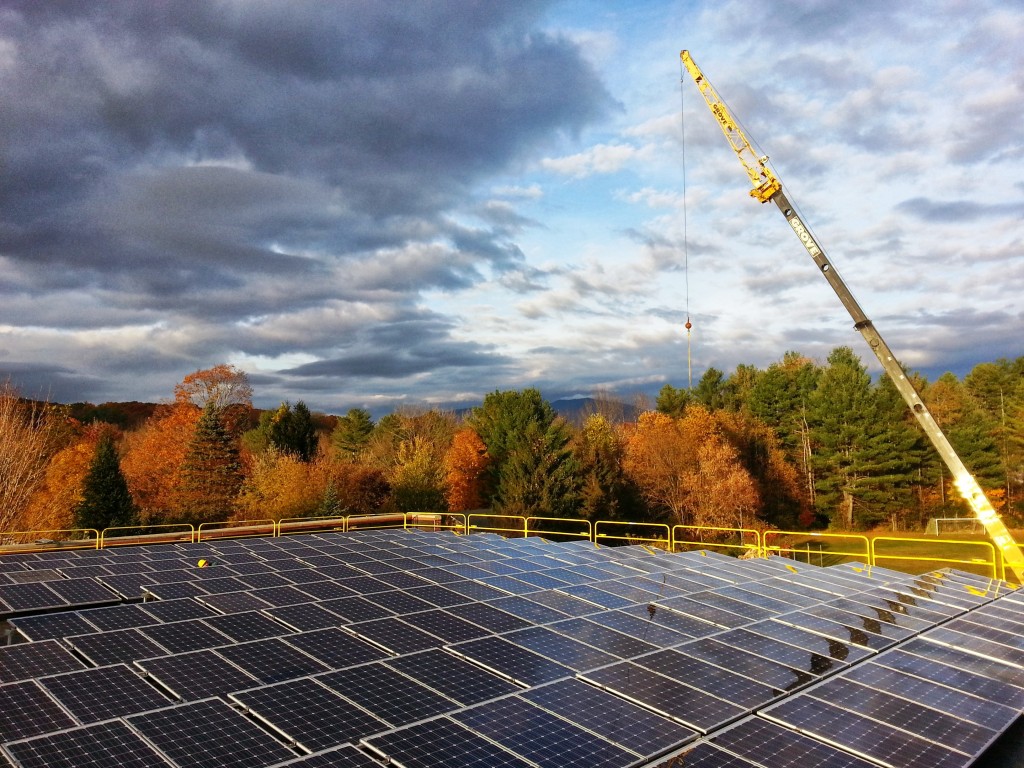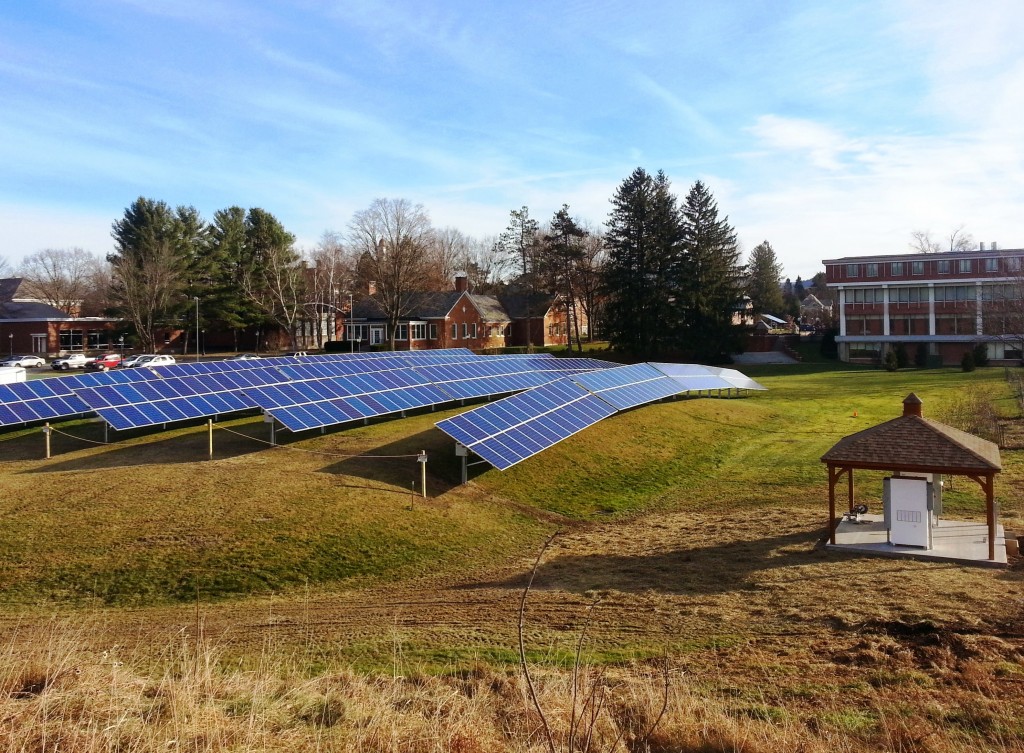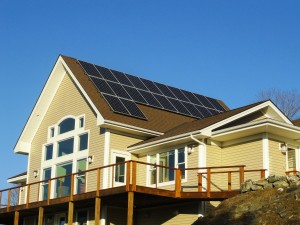By Khanti Munro
Solar is too expensive. How do I justify the cost?
A common misconception about going solar, for financial institutions and homeowners alike, is that investing in a solar-electric system only adds additional debt. The reality is that when financed, your new electric bill is the financing cost, and it replaces the old bill. You may still have a small service charge left on your monthly electric bill, but that will be it.
Your solar system financing should be lower than your current electric bill. When it is paid off in ten years or less, you have another twenty or more years of free energy.
When you finance a solar system, you are making a commitment, so it may feel like you have a large upfront cost, but your overall monthly payments go down immediately, compared to what your electric bill was — and then it goes away altogether.
Banks are now realizing solar isn’t some ‘hippy-dippy’ left-field alternative, but a robust home improvement worthy of financing. They also understand the cost of NOT going solar. Even assuming a conservative average 2-3% annual increase in your utility rates, without solar it will be more than double the cost of a new solar system.
Can I do this? Where does one start? How much will it would cost?
First, estimate the size of a solar-electric system that you will need, based on your current annual energy consumption, in kilowatt-hours (kWh). Do this by looking at your last 12 months of electric bills. You can also call and ask your utility for the information, or go to their web site.
Then you do a little math. Here in the Northeast, a 1-kilowatt (kW) system will generate approximately 1000 to 1200 kWh each year, with variation based on site conditions. Divide the number of kWh/year by about 1100 to get the system size you need. An example, if you use 8800 kWh/year, you would need an 8-kW solar-electric system. This is a large system!
With current installation costs running at around $4-5/watt, installed, that makes the approximate ‘pre-incentives’ cost for the 8-kW system around $32-40K. But incentives, which vary based on where you are, can reduce this cost by anywhere from 30-70%. In this case, that translates to about $16-20K, to be financed for the cost of a solar installation over ten years, though the equipment will last years longer.
You should compare this to the cost of NOT going solar, if you continue buying electricity. For 8,800 kWh/year, assuming a cost of $0.14/kWh, along with about a $15/month service charge, and a conservative annual utility rate hike of 2.5%, over a 25-year period, purchased electric costs would be around $50K!
What about a solar site? What if I don’t have a good site?
A good solar site is free from shade, from at least 9 am to 3 pm, year round, and faces somewhere between Southeast and Southwest. For a roof mount, the ideal southern facing roof plane would have a compass bearing of approximately 180°, and a pitch of 25-35° (6:12 to 8:12). It would ideally be composed of asphalt shingles or standing seam metal, though some other types of roofs can be used.
A ground mount provides more flexibility for siting, as you can typically locate it on your property where you get the most daily/annual sun, and face it ‘true-south’ with either the ideal fixed tilt, or use a tilt-adjustable rack. But you need to be sure a ground mount won’t compete for existing land-use. And remember, a full shade analysis using specialized equipment is important.
Vermonters who live on property with no shade-free areas, or live in rented homes, can still get solar systems. Vermont is one the few states with a provision for group net metering, which allows cooperative ownership of a solar-electric system located remotely from your home. The result has been an emergence of energy co-op’s and co-owned systems. The utility billing department credits your personal electric account, based on your ownership share and corresponding solar energy production of the system. For more information on group net metering, contact your local utility and/or solar installer.
A solar powered dental office with a Tracking system that follows the sun during the day, for maximum production.
But Solar only produces power in the daytime!
The majority of solar-electric systems installed today are grid-tied systems, and most have no storage batteries. When the sun shines, the solar modules produce power, and any excess power not consumed by your home is sold to the utility and credited to your account. At night, the power you use comes from the utility, and your account is billed. If you are making the same amount of power you consume, the prices cancel each other out.
In effect, the electric grid serves as battery, banking the excess power during the day, and sending some of it back when the sun is not shining and power is needed. The newly installed net-meter on your house keeps track of energy in and energy out. Your electric utility then settles up with you each month, and at the end of your 12-month billing cycle.
It’s important to know however that in a batteryless grid-tied system, when the grid goes down, your solar system will also shut off. This is because without backup batteries in the home to provide a steady voltage reference, the electronics in the system cannot continue to operate in a safe and efficient manner. If backup power is required in areas with frequent utility outages, or if you have critical needs such as medical purposes, then batteries can be used in the home solar-electric system.
How much of my energy needs will it cover?
A solar-electric system can be designed to meet all of, or just a portion of your annual energy consumption, based in part on your budget and mounting space. With proper forethought, solar can even be modular in design, and thus does not need to be installed all at once, which can be helpful in breaking up the costs, though costs are somewhat increased.
What will it do for our planet and carbon footprint?
Solar power will certainly reduce your environmental footprint. Here in the Northeast, every kWh of traditional fossil-based energy our homes consume causes a release of about 0.75 to 1.5 lbs of carbon dioxide (CO2). A typically sized 7 kW (26 panels) solar system will generate approximately 192,000 kWh during a 25-year warranty period, and reduces your carbon emissions by 144,000 to 288,000 lbs! Assuming the average Northern hardwood tree absorbs around a ton of CO2 in an average lifespan, that means this same system has the approximate carbon sequestering impact of no less than 72 trees!
By producing your own clean energy onsite, the external environmental costs of drilling, fracking, damming and burning fossil sources for energy are avoided. Every kWh produced on your own roof is one more reason not to drill in a wildlife refuge in Alaska, or send our money overseas to unstable governments in return for irreplaceable fossil energy sources.
What’s the bottom line?
Solar is exciting because it offers something we are not accustomed to having: a choice between buying a commodity and making it ourselves. Historically, solar hasn’t been able to compete with its heavily subsidized fossil counterparts, but that is changing. Over the past few years, the cost of solar equipment has dropped more than 50%, making the long-term costs of solar actually lower than your current electric bill. Solar is not the only solution, nor will it be feasible for everyone; but in the end it is one solid way to save money and tread a little more lightly on the environment.
Khanti Munro is the VP of solar operations at Positive Energy, an owner-operated construction company specializing in the installation of residential and commercial solar projects, along with general construction, crane service, and excavation. The company has two NABCEP PV Installation Professionals on staff. If they complete what they hope to complete, Positive Energy is on target to have installed 500kW in 2013! http://www.PositiveEnergyNY.com











Leave a Reply